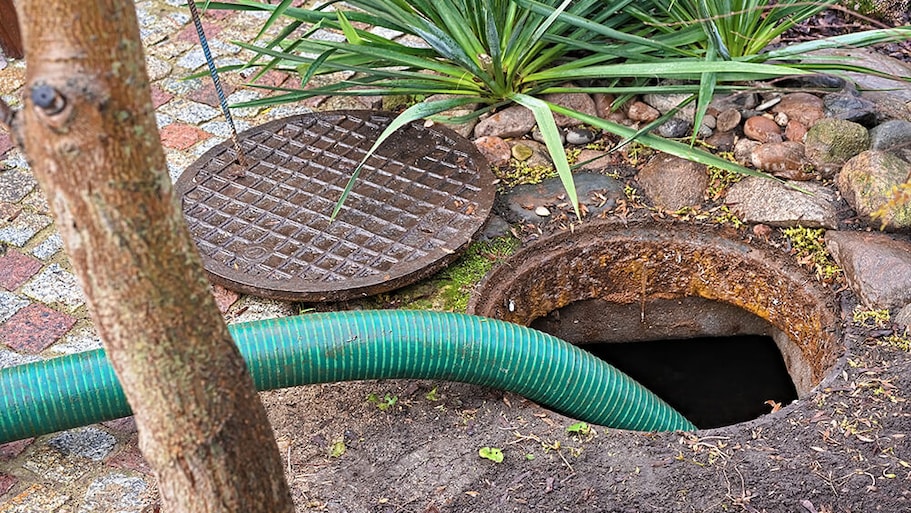
Caring for your septic system is crucial to ensuring its long life. But how much does it cost to pump a septic tank? We explore the different cost factors.
Say goodbye to septic tank sludge


It’s not particularly fun to think about where your household waste goes after you flush or drain it. But septic systems work hard to filter and treat wastewater, separating it from the solid waste, called sludge, that comes with it through the pipes. But what happens to that sludge after it sinks to the bottom of the septic tank? When you’re considering what to put in the septic tank to break down solids, this guide is here to help.
A septic tank holds wastewater and separates the liquid from the solid waste, all of which comes into the tank from your home’s plumbing. The filtered wastewater will move on through the septic system to the leach field, where it will be further treated and slowly released into the soil for safe disposal. But the solid waste sinks to the bottom of the tank. If it isn’t pumped out every few years, it can cause wastewater and even raw sewage to back up into the home or flood into the yard.
Pumping a septic tank costs $250 to $1,250, but you only need to pay this amount every three to five years. If your septic tank hasn’t been pumped in several years or decades, it likely needs to be replaced. A new septic system costs $3,460 to $24,000, depending on the size and type of septic system.
When your septic tank is full, wastewater will build up and potentially back up into your home’s pipes and overflow into your yard. If this happens, you’ll notice a few telltale signs, including the following:
Foul odors around your inside drains
Sewage smells outside
Water that won’t go down the drains
Toilets that continually can’t flush fully
Pipes in your home that make a constant gurgling noise
Unusually lush, green grass growing in your yard
Pooling water in your yard
If the tank is exceptionally full, you may even notice sewage backing up into your drains. If this is the case, you should turn off the water in your home and call a septic pro immediately to pump your tank and fix the issue. Sewage backflow can be a health hazard to you and your family, so let the pros handle this one.
The easiest way to find your septic tank is to look around the yard for a hill or recess in the yard, or on a snowy day, look for a large patch of melty snow. The other simple option is to call your local public health department or county registrar’s office for property records, which will usually include the location of the septic tank. If you’re still unsure, you can hire a septic tank company to locate the tank.
The good news, though, is that you don’t need to find and open the septic tank to feed the bacteria in the tank. In fact, opening a septic tank should be left to professionals because the sewage and sewer gasses in the tank can be harmful to humans, leading to illnesses like hydrogen sulfide poisoning or gastroenteritis. The bacteria are typically fine left alone to do their work on breaking down the solid waste. But even if you do want to help by using additives, you can pour these down a garbage disposal or flush them in a toilet, and they’ll make their way to the septic tank.
Your septic tank is part of a pretty self-sufficient system, where beneficial bacteria naturally thrive in the septic tank to help break down solids from the wastewater. But if you want to give the good bacteria a little boost, you can add a septic tank treatment every month to a few months (although there are commercial options with varying frequencies of three to 12 months).
Active dry yeast is a handy ingredient for baking homemade bread, but it also may be helpful for feeding the bacteria in the septic tank, as it breaks down the sludge. However, using yeast is controversial; some people say it helps, while others say it doesn’t really do anything.
If you want to try it out for yourself, you can either flush about 1/4 cup of instant yeast on its own, or dissolve a few tablespoons of active dry yeast in 5 cups of warm water and 2 cups of brown sugar, then flush this mixture. Either way, wait at least a few hours before using any other plumbing in the house.
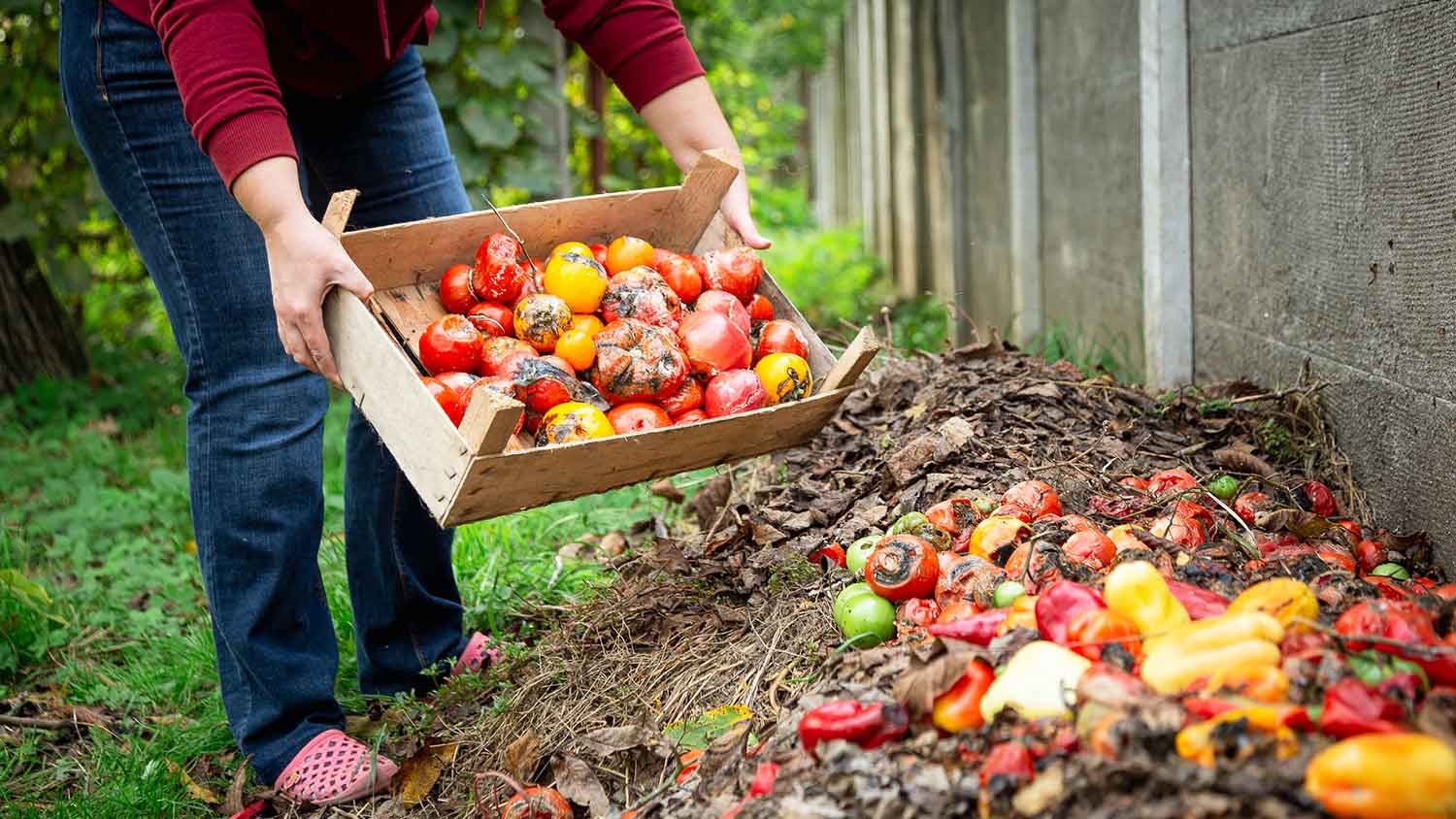
No need to throw out last week’s tomatoes that you didn’t get to for lunch—they could actually be used for a septic treatment. The pectinase in the rotting tomatoes can break down pectin in plant cell walls, and they may be helpful for breaking down solid waste, too.
Place three or four rotten tomatoes in a container or sealable bag, and smash them until they resemble canned, diced tomatoes. You want to break down the tomatoes so there are no big chunks left, which could clog the pipes. Then, run half the tomatoes through the garbage disposal with the water running or flush them. Follow up shortly after by doing the same with the remaining tomatoes.
Keep in mind that many homes with septic systems don’t have garbage disposals, as food scraps shouldn’t go through a septic system. If that’s the case for you, you’ll need to use the flushing method.
You can buy chemical treatments designed specifically for septic tank use. These treatments often come in liquid or dissolvable pod forms. To use a septic treatment, follow the instructions on the label, and pay attention to how frequently they are meant to be used.
There are pros and cons to a store-bought septic treatment, though. Many options cost only $10 to $20, but they are still more expensive than a DIY alternative. They may or may not be making much of a difference on the bacteria in the tank because, like any other septic treatment, the effectiveness of commercial treatments is widely debated.
When your sink is draining slowly or you hear gurgling in the back of the toilet, it may be a sign of a clog. It can be tempting to grab a commercial drain cleaner to clear out the debris and get the water flowing smoothly again, but if you have a septic system, these cleaners will only cause problems down the line. The chemicals in commercial drain cleaners and other household cleaning items, like bleach, can actually harm or kill the good bacteria in the system.
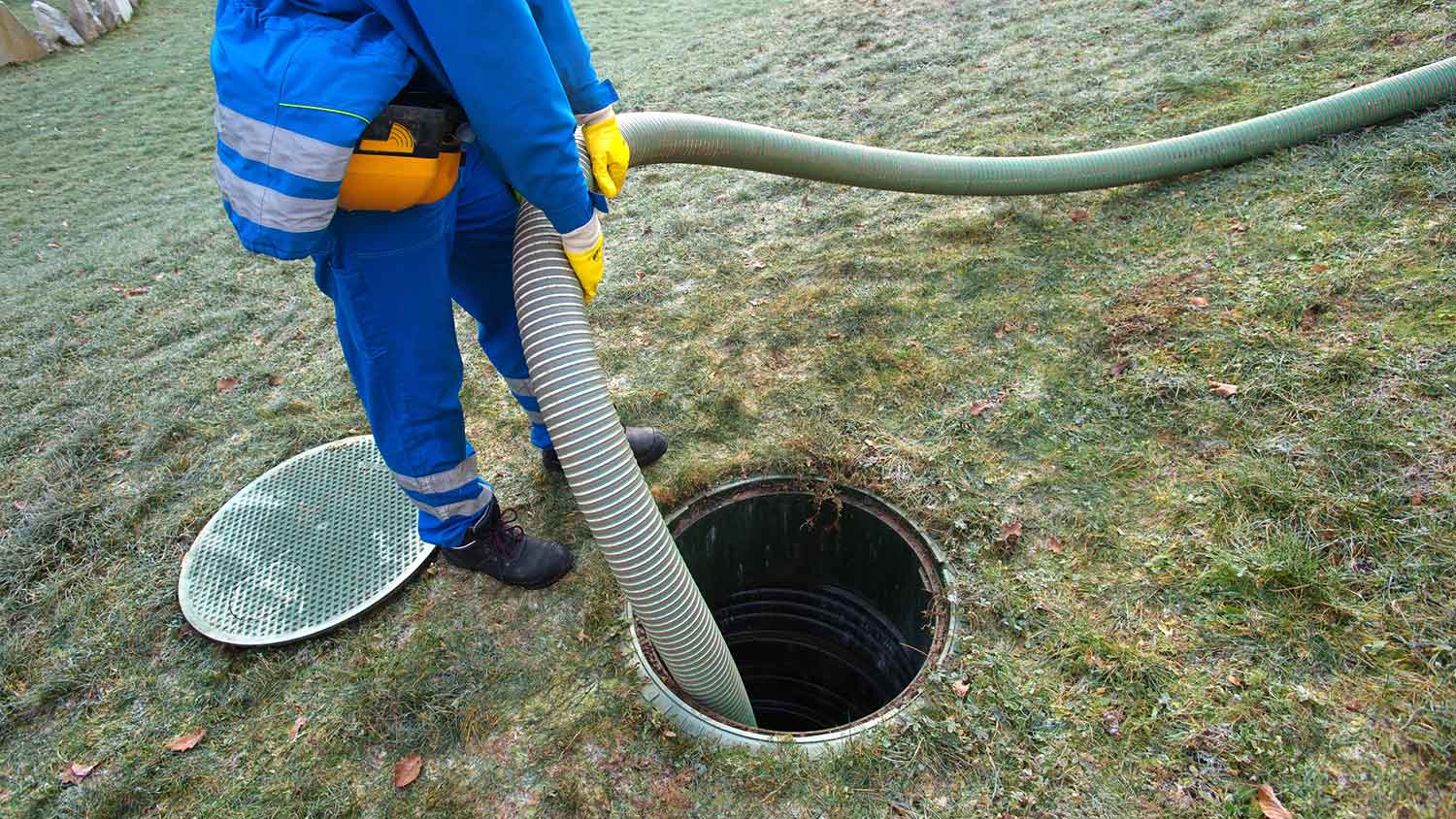
The best option for how to break down solids in a septic tank is to hire a local septic tank cleaner to pump the septic tank. This isn’t something you can DIY because it requires specialized equipment and training to handle sewage and wastewater. A septic system should be pumped at least every few years, so if it’s been a while since someone pumped the tank, it might be time to call in a pro.
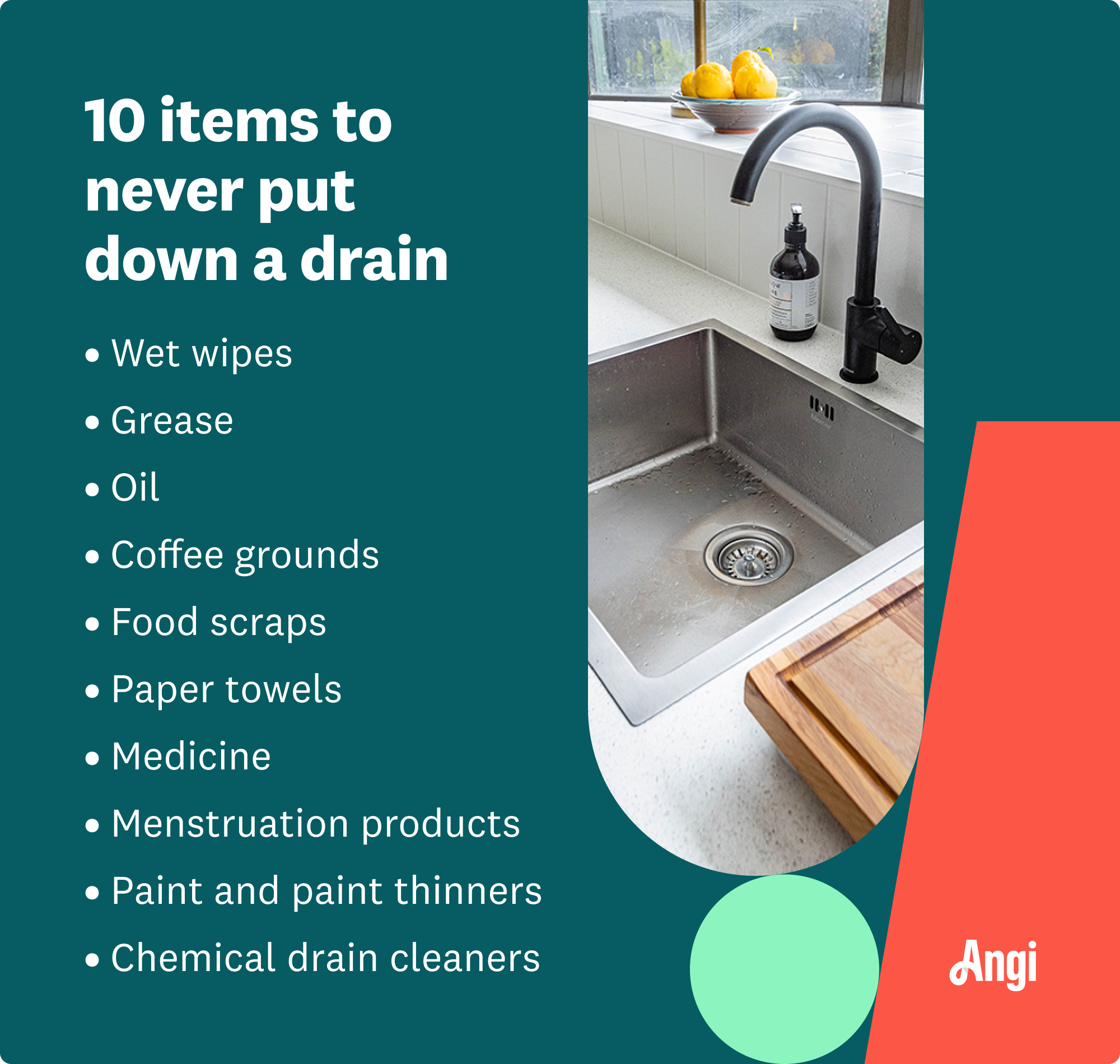
You may start considering what to put in a septic tank to break down solids if you notice a sewage odor around your yard or in your home. A smelly septic tank could be a sign that the septic tank is too full of sludge, there is a clog somewhere in the tank or in the plumbing, or that your tank isn’t the right fit for your property. There are a few things to do to fix a smelly septic system.
When you notice a sewage smell anywhere in or around your home, it’s time to call in the pros. If you ignore it, you could be left with sewage backing up into your drains or flooding into your yard, and this issue could damage the entire septic system.
You can easily learn how to check if a septic tank is full. You’ll just need to listen for weird sounds coming from the pipes or check for flooding near your septic tank. But if you’re not sure, hire a professional septic cleaner to inspect and pump the tank.
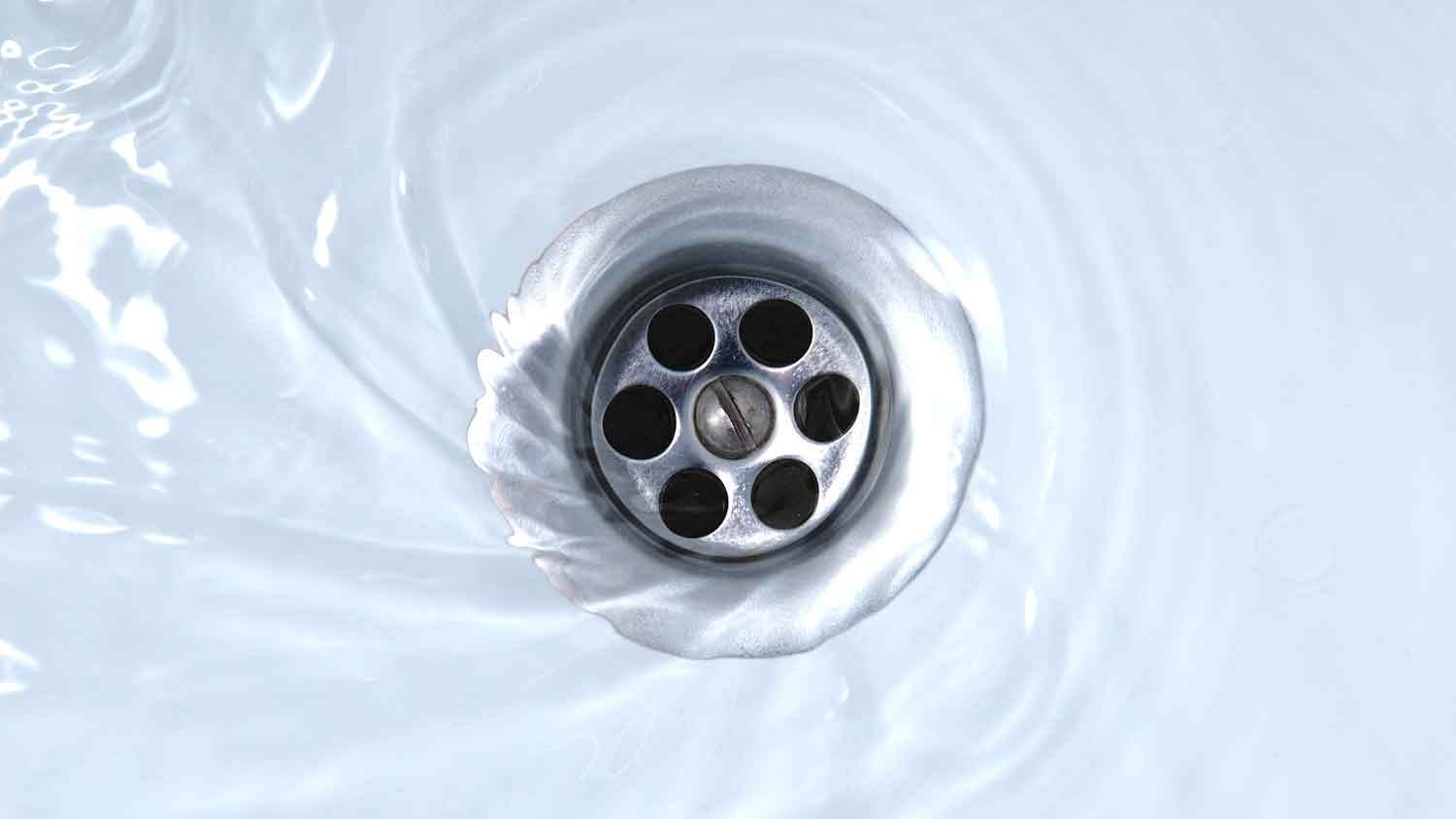
Clogs in the septic system or the plumbing inside the house can cause smells from built-up organic matter and gasses from the septic tank to flow into your home. Signs of clogs include foul smells, slow draining in your sinks, tubs, and showers, or gurgling noises in the pipes. You can try to clear a main sewer line clog yourself or have a plumber take a look.
If you seem to have to hire someone to pump your septic tank more often than every few years because of frequent odors, you might just not have the right type of septic system for your property. Depending on your home’s soil conditions, yard size, and local water tables, you may need a specific system.
Another factor to consider is the size of the septic tank. The average septic tank today is about 1,250 gallons, up from 750 gallons. If you live in an older home or your household has grown since the septic system was installed, you may need a larger capacity to handle the increase in wastewater.
You don’t have to leave the space above and around the septic tank open, but you do need to make sure the plants in your yard don’t grow roots into the septic tank or surrounding pipes. If the roots grow into pipes, they can cause smelly gasses and untreated wastewater to leak. Be sure to consider the best septic tank landscaping ideas for your property, like planting shallow-root perennials for lush greenery or colorful, moisture-loving plants, like the bearded iris.
From average costs to expert advice, get all the answers you need to get your job done.

Caring for your septic system is crucial to ensuring its long life. But how much does it cost to pump a septic tank? We explore the different cost factors.
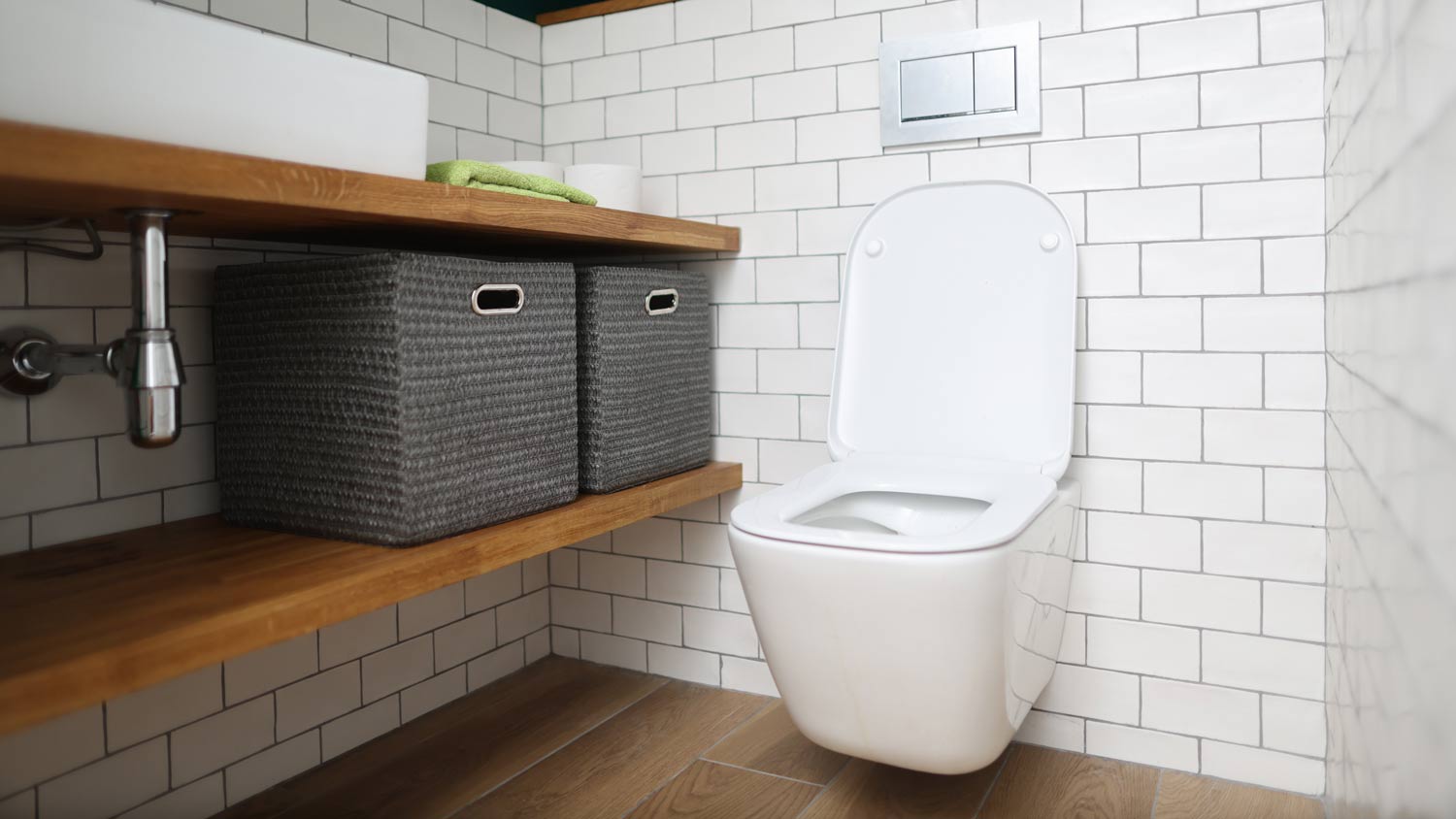
Need to know what sewer line replacement costs in St. Louis, MO? This guide will help you prepare to budget for sewer line replacement done by local contractors.

Sewer cleanout costs depend on the type of cleanout and how long the line will be. Click here to start planning your budget for this project.

Gurgling, slow drains could mean a main sewer line clog, which can be messy and smelly. Learn how to clear a main sewer line clog yourself with this guide.

Wondering if an anaerobic septic system is the right choice for your home? Check out this guide to learn more about how this type of system works.

Want to learn how to build a septic tank for your rural or off-grid property? First, check your local laws, then dive into these general guidelines.